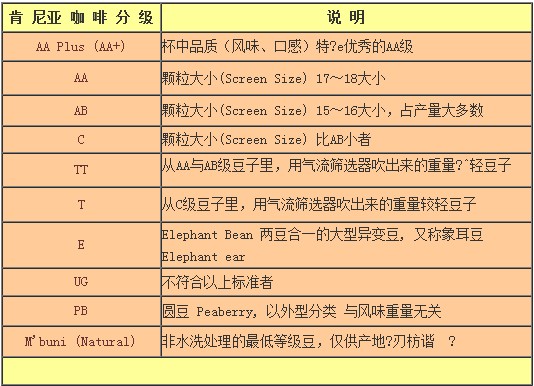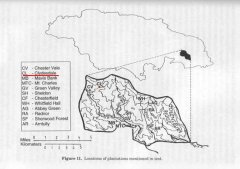Kenya coffee bean producer model coffee producing country
Kenya, located in East Africa, is one of the countries in the world that attaches great importance to the production of high-quality coffee. The quality of coffee managed by the government and technical guidance are its main characteristics. After harvesting, Kenya coffee must be purchased and tested by the Coffee Board of Kenya, CBK set up by the government, and the samples will be sent to buyers. Coffee buyers from around the world bid according to the quality of the samples they received at an auction in Nairobi, the capital. The government-run auction system encourages more than 570,000 small coffee merchants across Kenya because good quality can easily lead to good prices.
In fact, the government's efforts are not limited to this. The government has also provided technology for growing good coffee for many small coffee merchants, and has assisted nearly 300 agricultural and marketing cooperatives in better processing of green beans. CBK has also invested in production, quality research, marketing, and even financial guidance for the coffee industry. All of this contributes to Kenya Coffee's unparalleled charm and crazy love from coffee drinkers all over the world!
producing areas
Kenya's coffee cultivation history dates back to the end of the 19th century, according to the examination of coffee seeds from the northern neighboring country, is also the world's oldest coffee-producing country "Ethiopia" introduced, currently common species (Bourbon), Kents (Kents), Tibia (Typica) and Riuri 11 (Riuri 11) four varieties. Kenilai has a complex and varied terrain, with plateaus, deserts, canyons and grasslands. Coffee producing areas are spread all over the central and southwestern regions.| Highlands 1000 to 2500 meters above sea level, such as Mount Kenya in the central part, Aberdare Zone, Nyanza, Kasii, Bungoma in the west, etc.| Kericho, Nakuru. Kenyan coffee is overwhelmingly "organically grown" without certification because of improved cultivation techniques and the use of chemical pesticides or herbicides. Ken? The high-grade coffee (AA Plus, AA, AB, PB) is washed, and the non-washed (M buni) low-grade products are only for local use.
a distinctive grading system.
Is Kenya coffee classified differently? e) is based on "particle size" as the main basis,"cup quality" and "weight" as the auxiliary basis for grading. The following is a breakdown of Kenya coffee grades:

Kenyan coffee is best known for its distinctive, distinct fruity sweetness. S is afraid that people who drink sour coffee will have wonderful expressions on their faces after trying good Kenyan coffee-how can there be such sour and sweet coffee?
"Less coffee, more fruit tea" is a common feeling many people have for light to medium roasted Kenyan coffee. In addition to its obvious and fascinating fruit acidity, Kenya coffee is mostly grown by small coffee farmers in a variety of environments and is subject to different climates, rainfall and climate every year. A new type of water treatment system is proposed. AA Plus grade "Kenya AA+ Samburu" for example, 2001 Samburu has a strong aroma of dark plum, not high acidity, taste strong, in the winter of 2002, Samburu, showing a completely different flavor, mulberry pulp fruit and green plum, accompanied by a little Southeast Asian spice (Spicy) flavor, after drinking green tea sweet aroma, slightly more acidic than the previous year, taste still strong. The usual Kenyan flavors are not intense, but have fruity bright flavors, some with spices and some with red wine aromas. That's what Kenya is all about. Surprise coffee fans!
Important Notice :
前街咖啡 FrontStreet Coffee has moved to new addredd:
FrontStreet Coffee Address: 315,Donghua East Road,GuangZhou
Tel:020 38364473
- Prev

Jamaica Coffee Bean Manor Blue Mountain-Conastale Manor
Conastair Farm existed from 1801 to 1842. From 1801 to 1825, the first generation farmer was Colin McClarty, and the second generation owner was his son Alexander McClarty. From 1825 to 1842, the management right of the farm was handed over to the third generation farmer Alexander Campbell. After 1842, there was no way to examine the information about the farm, Connor.
- Next

What is the common sense of coffee in 53 coffee bean producing countries in the world?
Related
- Beginners will see the "Coffee pull flower" guide!
- What is the difference between ice blog purified milk and ordinary milk coffee?
- Why is the Philippines the largest producer of crops in Liberia?
- For coffee extraction, should the fine powder be retained?
- How does extracted espresso fill pressed powder? How much strength does it take to press the powder?
- How to make jasmine cold extract coffee? Is the jasmine + latte good?
- Will this little toy really make the coffee taste better? How does Lily Drip affect coffee extraction?
- Will the action of slapping the filter cup also affect coffee extraction?
- What's the difference between powder-to-water ratio and powder-to-liquid ratio?
- What is the Ethiopian local species? What does it have to do with Heirloom native species?

